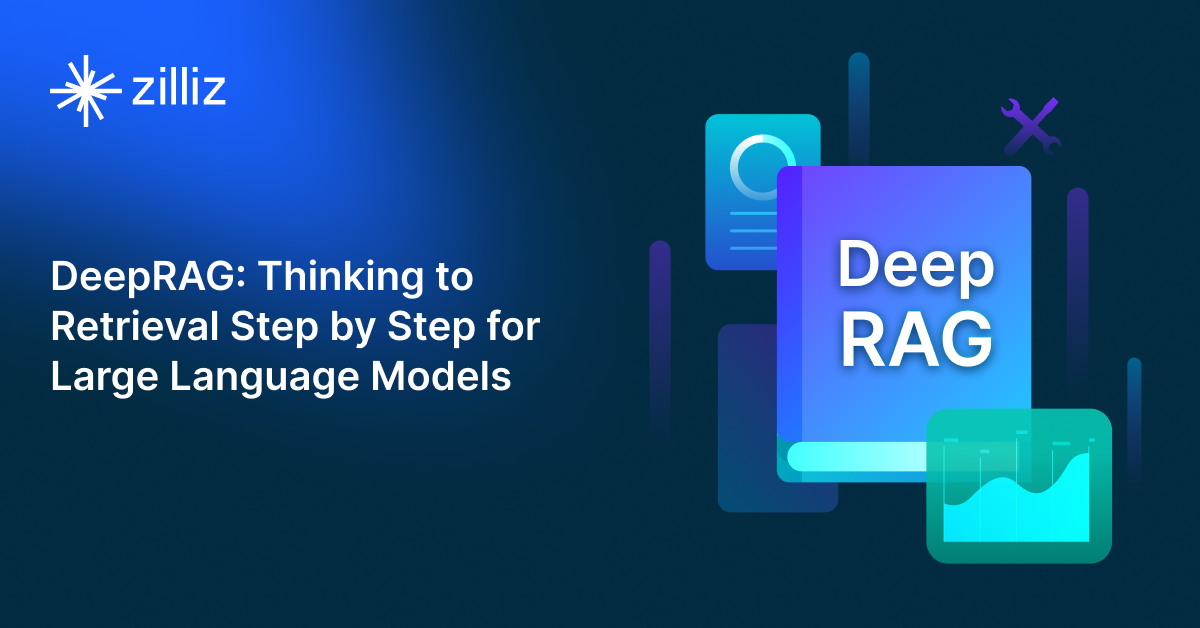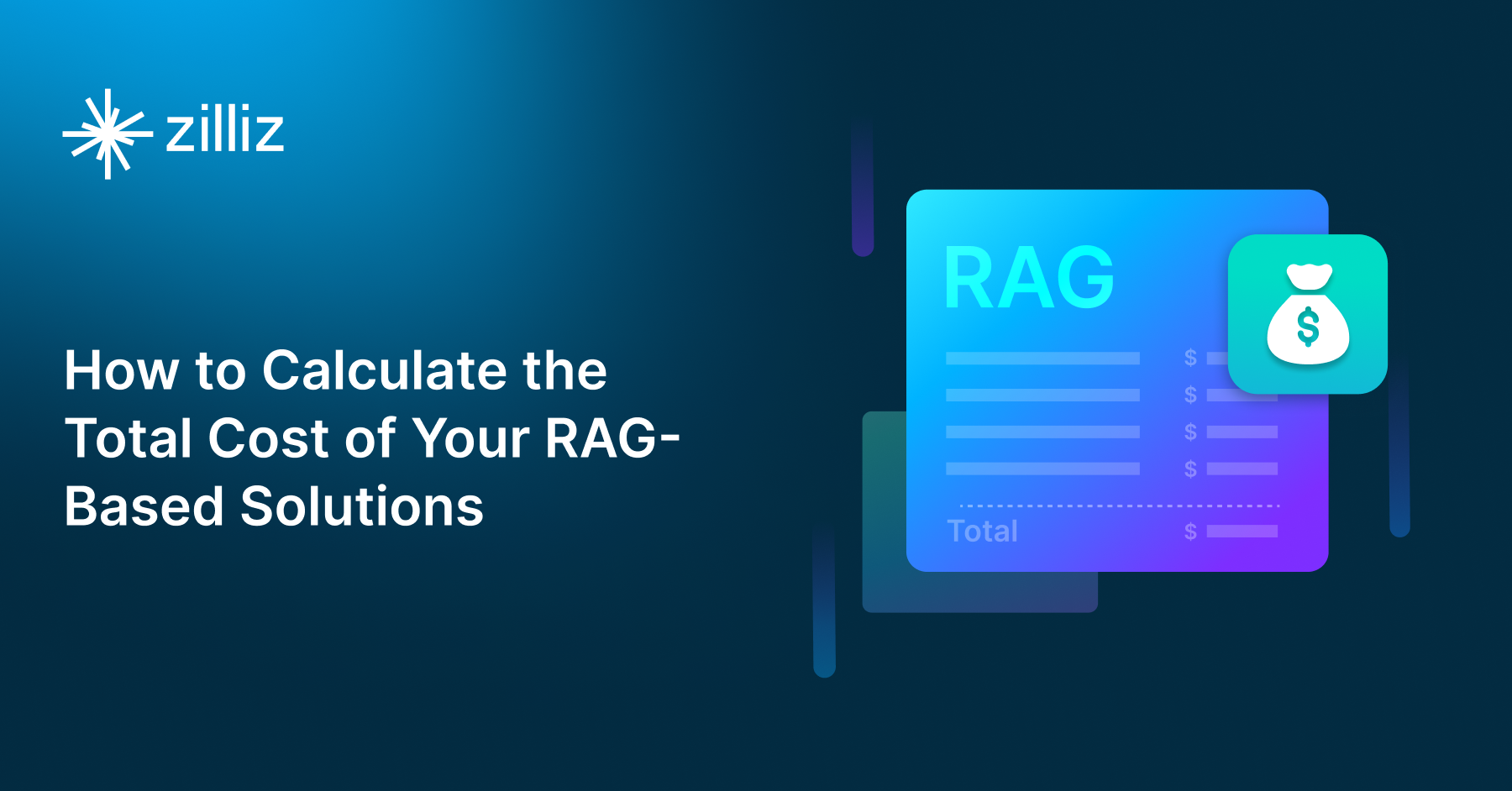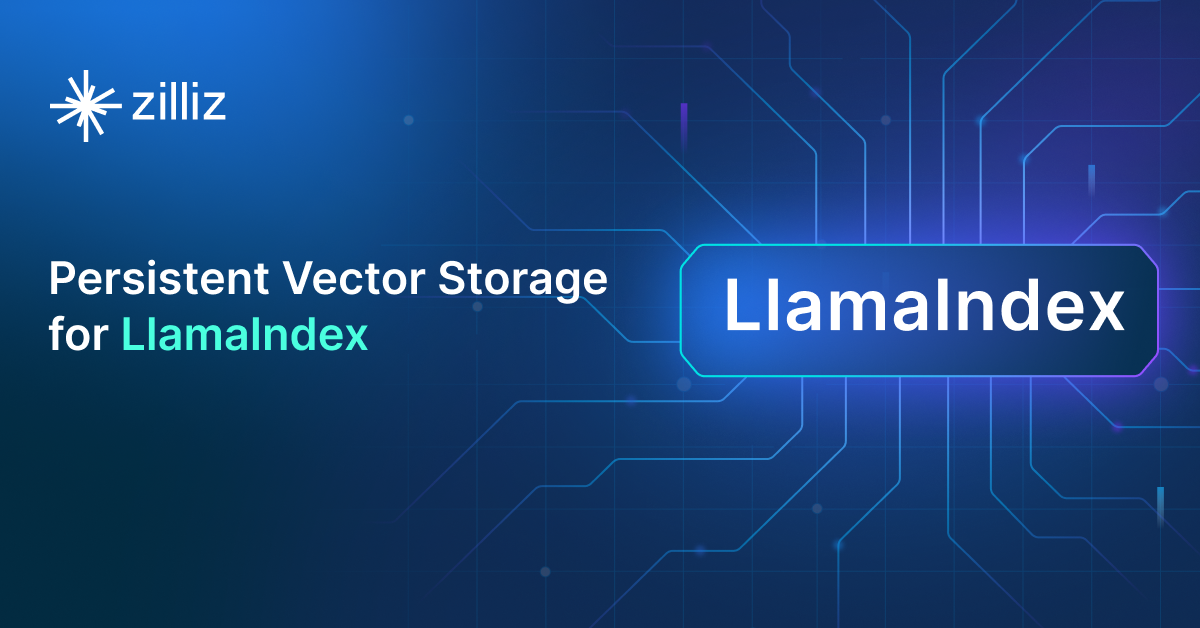Build RAG Chatbot with LangChain, pgvector, AWS Bedrock Claude 3.5 Sonnet, and OpenAI text-embedding-ada-002
Introduction to RAG
Retrieval-Augmented Generation (RAG) is a game-changer for GenAI applications, especially in conversational AI. It combines the power of pre-trained large language models (LLMs) like OpenAI’s GPT with external knowledge sources stored in vector databases such as Milvus and Zilliz Cloud, allowing for more accurate, contextually relevant, and up-to-date response generation. A RAG pipeline usually consists of four basic components: a vector database, an embedding model, an LLM, and a framework.
Key Components We'll Use for This RAG Chatbot
This tutorial shows you how to build a simple RAG chatbot in Python using the following components:
- LangChain: An open-source framework that helps you orchestrate the interaction between LLMs, vector stores, embedding models, etc, making it easier to integrate a RAG pipeline.
- Pgvector: an open-source extension for PostgreSQL that enables efficient storage and querying of high-dimensional vector data, essential for machine learning and AI applications. Designed to handle embeddings, it supports fast approximate nearest neighbor (ANN) searches using algorithms like HNSW and IVFFlat. Since it is just a vector search add-on to traditional search rather than a purpose-built vector database, it lacks scalability and availability and many other advanced features required by enterprise-level applications. Therefore, if you prefer a much more scalable solution or hate to manage your own infrastructure, we recommend using Zilliz Cloud, which is a fully managed vector database service built on the open-source Milvus and offers a free tier supporting up to 1 million vectors.)
- AWS Bedrock Claude 3.5 Sonnet: This model combines the advanced language processing abilities of Claude 3.5 with AWS's scalable infrastructure, offering enhanced performance for complex text generation tasks. Its strengths lie in versatility and resilience, making it ideal for applications in creative writing, customer support automation, and interactive content generation.
- OpenAI text-embedding-ada-002: This model specializes in generating high-quality text embeddings, providing a powerful tool for various NLP applications. Its strengths lie in semantic search, clustering, and recommendation tasks. Ideal for developers needing efficient and scalable solutions for understanding and processing natural language data in diverse contexts.
By the end of this tutorial, you’ll have a functional chatbot capable of answering questions based on a custom knowledge base.
Note: Since we may use proprietary models in our tutorials, make sure you have the required API key beforehand.
Step 1: Install and Set Up LangChain
%pip install --quiet --upgrade langchain-text-splitters langchain-community langgraph
Step 2: Install and Set Up AWS Bedrock Claude 3.5 Sonnet
pip install -qU "langchain[aws]"
# Ensure your AWS credentials are configured
from langchain.chat_models import init_chat_model
llm = init_chat_model("anthropic.claude-3-5-sonnet-20241022-v2:0", model_provider="bedrock_converse")
Step 3: Install and Set Up OpenAI text-embedding-ada-002
pip install -qU langchain-openai
import getpass
import os
if not os.environ.get("OPENAI_API_KEY"):
os.environ["OPENAI_API_KEY"] = getpass.getpass("Enter API key for OpenAI: ")
from langchain_openai import OpenAIEmbeddings
embeddings = OpenAIEmbeddings(model="text-embedding-ada-002")
Step 4: Install and Set Up pgvector
pip install -qU langchain-postgres
from langchain_postgres import PGVector
vector_store = PGVector(
embeddings=embeddings,
collection_name="my_docs",
connection="postgresql+psycopg://...",
)
Step 5: Build a RAG Chatbot
Now that you’ve set up all components, let’s start to build a simple chatbot. We’ll use the Milvus introduction doc as a private knowledge base. You can replace it with your own dataset to customize your RAG chatbot.
import bs4
from langchain import hub
from langchain_community.document_loaders import WebBaseLoader
from langchain_core.documents import Document
from langchain_text_splitters import RecursiveCharacterTextSplitter
from langgraph.graph import START, StateGraph
from typing_extensions import List, TypedDict
# Load and chunk contents of the blog
loader = WebBaseLoader(
web_paths=("https://milvus.io/docs/overview.md",),
bs_kwargs=dict(
parse_only=bs4.SoupStrainer(
class_=("doc-style doc-post-content")
)
),
)
docs = loader.load()
text_splitter = RecursiveCharacterTextSplitter(chunk_size=1000, chunk_overlap=200)
all_splits = text_splitter.split_documents(docs)
# Index chunks
_ = vector_store.add_documents(documents=all_splits)
# Define prompt for question-answering
prompt = hub.pull("rlm/rag-prompt")
# Define state for application
class State(TypedDict):
question: str
context: List[Document]
answer: str
# Define application steps
def retrieve(state: State):
retrieved_docs = vector_store.similarity_search(state["question"])
return {"context": retrieved_docs}
def generate(state: State):
docs_content = "\n\n".join(doc.page_content for doc in state["context"])
messages = prompt.invoke({"question": state["question"], "context": docs_content})
response = llm.invoke(messages)
return {"answer": response.content}
# Compile application and test
graph_builder = StateGraph(State).add_sequence([retrieve, generate])
graph_builder.add_edge(START, "retrieve")
graph = graph_builder.compile()
Test the Chatbot
Yeah! You've built your own chatbot. Let's ask the chatbot a question.
response = graph.invoke({"question": "What data types does Milvus support?"})
print(response["answer"])
Example Output
Milvus supports various data types including sparse vectors, binary vectors, JSON, and arrays. Additionally, it handles common numerical and character types, making it versatile for different data modeling needs. This allows users to manage unstructured or multi-modal data efficiently.
Optimization Tips
As you build your RAG system, optimization is key to ensuring peak performance and efficiency. While setting up the components is an essential first step, fine-tuning each one will help you create a solution that works even better and scales seamlessly. In this section, we’ll share some practical tips for optimizing all these components, giving you the edge to build smarter, faster, and more responsive RAG applications.
LangChain optimization tips
To optimize LangChain, focus on minimizing redundant operations in your workflow by structuring your chains and agents efficiently. Use caching to avoid repeated computations, speeding up your system, and experiment with modular design to ensure that components like models or databases can be easily swapped out. This will provide both flexibility and efficiency, allowing you to quickly scale your system without unnecessary delays or complications.
pgvector optimization tips
To optimize pgvector in a Retrieval-Augmented Generation (RAG) setup, consider indexing your vectors using GiST or IVFFlat to significantly speed up search queries and improve retrieval performance. Make sure to leverage parallelization for query execution, allowing multiple queries to be processed simultaneously, especially for large datasets. Optimize memory usage by tuning the vector storage size and using compressed embeddings where possible. To further enhance query speed, implement pre-filtering techniques to narrow down search space before querying. Regularly rebuild indexes to ensure they are up to date with any new data. Fine-tune vectorization models to reduce dimensionality without sacrificing accuracy, thus improving both storage efficiency and retrieval times. Finally, manage resource allocation carefully, utilizing horizontal scaling for larger datasets and offloading intensive operations to dedicated processing units to maintain responsiveness during high-traffic periods.
AWS Bedrock Claude 3.5 Sonnet optimization tips
Claude 3.5 Sonnet in AWS Bedrock delivers an improved balance of efficiency and reasoning. Optimize retrieval by incorporating reranking techniques that prioritize the most contextually relevant documents. Keep prompts structured and avoid unnecessary details to prevent context window saturation. Use temperature values between 0.1 and 0.3 for factual responses, fine-tuning top-p and top-k as needed. Cache frequently accessed data to reduce redundant API calls and lower operational costs. Leverage AWS Bedrock’s elastic scaling to handle demand spikes while maintaining performance. If used with Claude 3.5 Opus, delegate more complex reasoning tasks to Opus while Sonnet handles general-purpose queries.
OpenAI text-embedding-ada-002 optimization tips
OpenAI text-embedding-ada-002 is widely used for its balance between performance and cost efficiency. Optimize retrieval by segmenting long documents into smaller, meaningful chunks before embedding, ensuring better contextual alignment with queries. Implement vector quantization to reduce memory footprint if handling large-scale embeddings. Use multi-stage retrieval, where an initial ANN search is followed by a more precise filtering or re-ranking step. Adjust index refresh frequency based on data update cycles to maintain relevance without excessive compute overhead. Leverage batching for embedding operations to minimize API latency. Consider fallback mechanisms, such as keyword-based retrieval, for edge cases where dense search alone may fail.
By implementing these tips across your components, you'll be able to enhance the performance and functionality of your RAG system, ensuring it’s optimized for both speed and accuracy. Keep testing, iterating, and refining your setup to stay ahead in the ever-evolving world of AI development.
RAG Cost Calculator: A Free Tool to Calculate Your Cost in Seconds
Estimating the cost of a Retrieval-Augmented Generation (RAG) pipeline involves analyzing expenses across vector storage, compute resources, and API usage. Key cost drivers include vector database queries, embedding generation, and LLM inference.
RAG Cost Calculator is a free tool that quickly estimates the cost of building a RAG pipeline, including chunking, embedding, vector storage/search, and LLM generation. It also helps you identify cost-saving opportunities and achieve up to 10x cost reduction on vector databases with the serverless option.
 Calculate your RAG cost
Calculate your RAG cost
What Have You Learned?
By diving into this tutorial, you’ve unlocked the magic of building a powerful RAG system from scratch! You learned how LangChain acts as the ultimate orchestrator, seamlessly connecting your tools into a cohesive pipeline. With pgvector as your vector database—powered by PostgreSQL’s reliability—you now know how to store and retrieve embeddings efficiently, turning unstructured data into searchable knowledge. AWS Bedrock’s Claude 3.5 Sonnet became your creative powerhouse, generating human-like responses with impressive accuracy, while OpenAI’s text-embedding-ada-002 transformed raw text into rich numerical representations, enabling the system to “understand” context and nuance. Together, these components form a dynamic workflow: ingest data, embed it, store it, retrieve relevant chunks, and generate answers—all while maintaining flexibility for customization. You even picked up pro tips like optimizing chunk sizes for balance between context and performance and leveraging pgvector’s indexing to speed up searches. Plus, that free RAG cost calculator? A game-changer for budgeting your AI projects without surprises!
Think about it: you’ve just pieced together a system that bridges cutting-edge AI with real-world data, opening doors for chatbots, research tools, personalized assistants, and so much more. The best part? This is just the beginning. With these tools in your toolkit—and the knowledge of how they interplay—you’re ready to experiment, tweak, and scale. Maybe you’ll fine-tune embeddings for niche domains, integrate multimodal data, or build a cost-efficient pipeline for enterprise use. The possibilities are endless, and the AI landscape is yours to explore. So go ahead—fire up your IDE, load your data, and start building. Every line of code you write brings you closer to creating something truly transformative. The future of intelligent applications is in your hands—now go make it shine! 🚀
Further Resources
🌟 In addition to this RAG tutorial, unleash your full potential with these incredible resources to level up your RAG skills.
- How to Build a Multimodal RAG | Documentation
- How to Enhance the Performance of Your RAG Pipeline
- Graph RAG with Milvus | Documentation
- How to Evaluate RAG Applications - Zilliz Learn
- Generative AI Resource Hub | Zilliz
We'd Love to Hear What You Think!
We’d love to hear your thoughts! 🌟 Leave your questions or comments below or join our vibrant Milvus Discord community to share your experiences, ask questions, or connect with thousands of AI enthusiasts. Your journey matters to us!
If you like this tutorial, show your support by giving our Milvus GitHub repo a star ⭐—it means the world to us and inspires us to keep creating! 💖
- Introduction to RAG
- Key Components We'll Use for This RAG Chatbot
- Step 1: Install and Set Up LangChain
- Step 2: Install and Set Up AWS Bedrock Claude 3.5 Sonnet
- Step 3: Install and Set Up OpenAI text-embedding-ada-002
- Step 4: Install and Set Up pgvector
- Step 5: Build a RAG Chatbot
- Optimization Tips
- RAG Cost Calculator: A Free Tool to Calculate Your Cost in Seconds
- What Have You Learned?
- Further Resources
- We'd Love to Hear What You Think!
Content
Vector Database at Scale
Zilliz Cloud is a fully-managed vector database built for scale, perfect for your RAG apps.
Try Zilliz Cloud for Free


